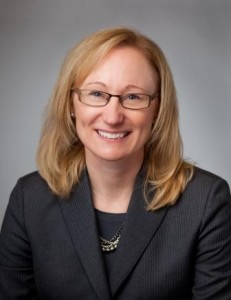Technology the way to go, says state transportation chief
Source: Bill Sheets, The Herald, July 11, 2013.
Information about the I-5 bridge over the Skagit River was available to truck drivers on the state’s website before the May 23 accident in which a truck struck the span, causing part of it to fall into the waterway.
 This information might not have been as accessible as it could have been, however, transportation secretary Lynn Peterson told a meeting of the Washington Clean Technology Alliance, a trade association, in Seattle on Wednesday.
This information might not have been as accessible as it could have been, however, transportation secretary Lynn Peterson told a meeting of the Washington Clean Technology Alliance, a trade association, in Seattle on Wednesday.
It was on an 11-by-14-inch PDF file, in tiny type.
By contrast, apps are available that can provide verbal cues to drivers, such as, “You are approaching a bridge you may want to pay attention to,” she said.
Improving the flow of information to drivers is a primary challenge for the state in improving its road safety and capacity in the near future, Peterson said.
“We’re going to have to amp up what we’re talking about in terms of technology,” she said.
The topic of Peterson’s talk was the future of transportation in the state. She and other transportation experts from the region participated in a panel discussion after her presentation.
Peterson was appointed to her position earlier this year by Gov. Jay Inslee, replacing Paula Hammond, who retired.
The state’s priorities in the coming years will be to “maintain what you have, finish what you’ve started and keep it safe for all modes,” she said.
Apps such as OneBusAway,in which the nearest bus can be located quickly on line, and 520//I-90,which provides a moment-to-moment comparison of traffic on the Lake Washington bridges, are only as effective as the information they get from the state, she said.
“So we’re going to have to figure out, “how do we make sure our data is smart?'”
Currently, the transportation department responds to accidents or blockages by watching road cameras and sending out its incident response team.
There might be a better way, Peterson said. For example, people are using a GPS-based navigational tool called Waze to help them find the quickest travel routes.
“Right now, everything that we do is kind of one dimensional in terms of our traffic control,” she said.
Finishing current road projects that have already been funded will help, she said. She cited the $3.1 billion Seattle waterfront tunnel project as an example.
In Snohomish County, close to $1 billion in road projects are currently underway.
“We need to use the capacity that we have. That’s going to be a mantra as we move forward at (the transportation department), and really for the rest of the United States,” Peterson said.
Funding for transportation also is going to have to become more technology based, she said. The gas-tax model is becoming obsolete.
The trick will be to develop a way to charge drivers based on road use electronically — a user fee similar in spirit to the gas tax — without becoming overly intrusive in tracking their whereabouts.
“It’s not going to happen overnight. It’s going to be a rough conversation,” she said.
It’s already happening with electronic tolling on the Highway 520 bridge, toll lanes on Highway 167 in south King County and planned toll lanes on I-405, she said.
Encouraging use of smaller vehicles that use alternative fuels could help reduce energy costs and road wear, which in turn could help the state’s economy and better preserve the road system, speakers said.
As far as mass transit is concerned, Peterson said, the state’s rail plan was written years ago to give priority to freight trains.
Passenger trains can’t travel on the same tracks at the higher speeds that will make them more attractive to travelers, Peterson said.
Improving rail service will require side tracking, more bridges over roadways and tracks and other spendy work, she said.
“We are going to have to think about how to improve the speed of passenger rail and how we’re going to pay for it,” she said.